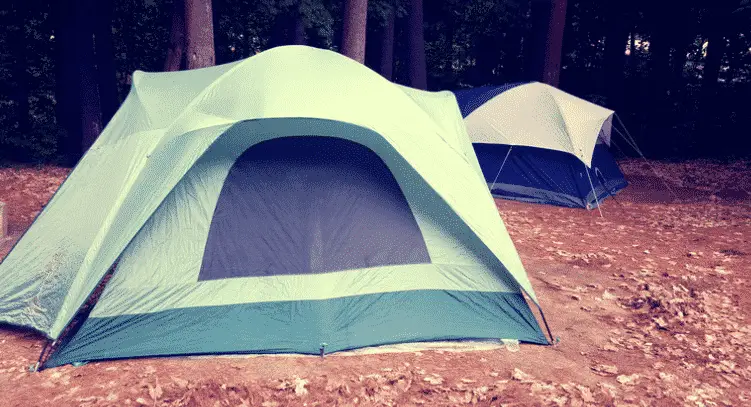Pitching a tent under a tree seems like a great idea! You don’t have to deal with direct sunlight since there’s lots of shade. Rain will fall around the canopy of leaves providing cover from the storm. It sounds like a great idea, but is it safe to camp under a tree? Should you pitch a tent under a tree?
Pitching a tent under a tree will give you shade on hot summer days, but you need to take precautions. It’s usually safe to camp under healthy trees in mild weather, but storms increase the risk of branches and other falling objects raining down from above. Never camp under a tree with dead branches, loose limbs, and trees with fruit that could fall. You should also avoid solitary trees and the edge of forests during thunderstorms.
There are lots of benefits to camping under trees, but you need to factor in a few risks. In the rest of this post, I’ll explain where and when it’s safe to camp under a tree, and teach you how to avoid most of the risks.
Table Of Contents
Can You Pitch A Tent Under A Tree?
Can you pitch a tent under a tree? That seems like such a simple question, but it doesn’t have an easy answer. You can pitch a tent under a tree, but there are a few safety precautions that I’ll get into below. When I’m backpacking in the heat of summer, I’ll pitch my tent under a tree 90% of the time. Trees provide lots of shade and will cool down a tent that gets too hot.
I’m not much of a risk taker, so if it wasn’t safe I wouldn’t do it! Think about all the primitive campgrounds and state/national parks you’ve stayed at throughout your life. Were the campsite located in a wide open field or surrounded by trees. Some RV parks are in open fields, but most primitive tent camping sites are in the middle of forests.
Would they put all of there guests at risk if it wasn’t safe to camp under a tree? No they would be worried about getting sued and liability issues. Camping under trees is usually safe, but you need to take a few precautions when choosing a site. Let’s go over a few of the things you need to watch out for when setting up camp under trees.
- Rain, Snow, Wind: Inclement weather increases the chance of dead limbs and branches falling out of the tree. Falling branches can damage your tent, but there’s also a risk of serious injury.
- Lightning: Trees are more likely to attract lightning since they’re taller than surrounding objects, but that’s only when there’s a solitary tree or you’re at the edge of a tree line. Going deep in a forest puts your chances of getting struck by lightning at the same odds as getting struck anywhere else.
- Dead Branches and Loose Limbs: Look for a healthy tree without dead branches and loose limbs. Live branches don’t randomly fall out of a tree for no reason. They need strong winds, rain or heavy snow to snap them off. Think about times where you’ve tried to snap a fresh cut green tree branch. They may bend or split down the middle, but it’s hard to snap them in half.
- Fruit Trees, Pine Cones, Acorns and Other Falling Objects: Look at the ground around the tree base to see if there are any fruit, acorns, and other objects that randomly fall out of the tree. You don’t want to get hit in the head with a crab apple while you’re sitting around the campfire.
- Pine Needles and Sap: Pine needles are sharp and they’ll tear through the bottom of your tent. Lay down a tent footprint or tarp under your tent if you need to setup near the base of a pine tree. You should also try to avoid tree sap, because it’s a serious pain to clean off.
- Bird Poop: Have you ever parked your car under a tree with birds eating and pooping from above. It doesn’t take long for your car to be completely covered in bird poop. If there’s a birds nest above your tent it’s most likely going to get pooped on and it’s not easy to clean off.
Should You Pitch A Tent Under A Tree?
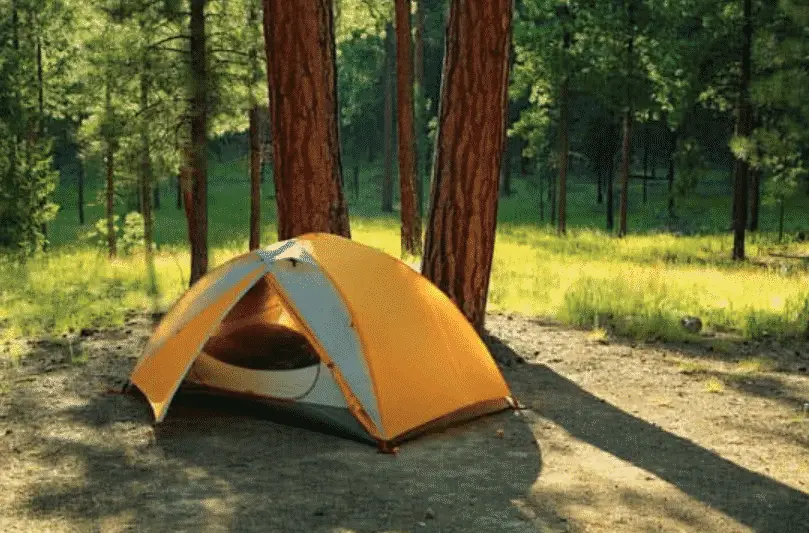
Now that I mentioned lots of reasons why it’s bad to camp under a tree (only 1 good one) you’re probably asking yourself more questions than before. So should you pitch a tent under a tree? Yes, it’s generally safe in mild weather so you should definitely consider setting up camp under a tree to get some shade in the summer.
There is a slight risk, but are you afraid to hike through the woods, because of falling branches? It’s actually less risky than hiking through the woods since you’re actively picking out healthy trees. You would have to be crazy to completely avoid walking under trees.
You just need to figure out which trees are safe to camp under and know when it’s better to head for open ground. Finding a safe tree to camp under is fairly simple! Look for young healthy trees without dead branches, loose limbs, and other objects (fruit, pinecones, acorns, etc.) that could fall.
There’s not much risk camping in mild weather, but there are times when it’s better to seek open ground. Rain, snow, and wind increase the chance of dislodging branches and knocking over unhealthy trees. You don’t want to be anywhere near dead branches and loose limbs when the weather turns.
We all know that trees attract lightning, so you may be wondering why I didn’t mention thunderstorms in the last paragraph. I’ll explain in detail below, but seeking open ground during a thunderstorm will actually increase your chances of being struck by lightning.
Under a solitary tree and the edge of a forest increases your chance of being struck by lighting, but heading deep into a densely grown forest reduces the odds. You still have to watch out for falling branches so find a young/short healthy tree, but with lots of trees around there are more potential targets that can get struck. The risk of being hit in the middle of a dense forest isn’t any higher than any other place (1 in 500,000).
Is It Safe To Camp Under A Tree?
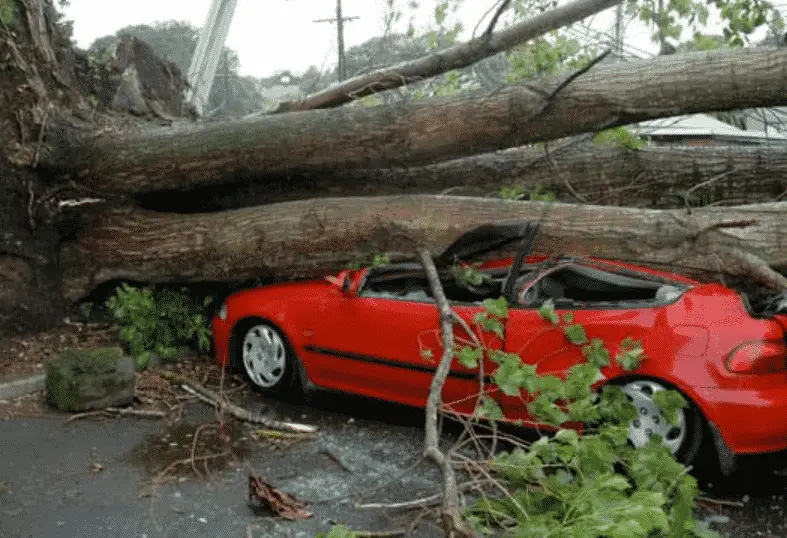
Camping under a healthy tree is usually safe, but it’s hard to give a definitive answer on whether or not it’s safe to camp under a tree. You have to think about the weather, falling objects (branches, fruits, acorns, etc.), lightning, and the condition of the tree.
Camping under a tree to get a little bit of shade on a hot day with mild wind is generally safe. Pitching a tent under a dying tree in lightning, rain, snow, or windy weather is crazy! You also need to take the individual tree into consideration.
Look around the base of the tree and look up to get an idea of the trees health. Is the ground littered with fruits, pine needles, acorns, etc.? That’s a bad tree to camp under, because there’s bound to be falling debris.
Does the tree look generally healthy? Look for dying branches and loose limbs that could fall if the wind picks up. There’s always risk pitching a tent under a tree, but it’s fairly safe to pitch a tent under a healthy tree in mild weather (no wind, rain, snow).
Never camp under unhealthy trees with dead branches and loose limbs. It’s hard to predict when a dead or loose branch will fall. You don’t want to be on the receiving end of a falling branch. If you’re lucky it will only damage your tent, but there’s always a risk of getting hit by falling branches.
Whether or not you should camp under a tree depends on how you feel about accepting a little bit of a risk. Look at the picture above of a car that’s crushed by a tree. That’s a big healthy tree, but even small branches can tear through your tent crushing you in bed. I guarantee the owner wasn’t expecting a tree to crush his car that day.
Getting crushed by a tree is a 1 in a 10,000 risk, but is it worth betting your life on those odds? There are lots of benefits to camping a under a tree, but you’re the only person that can decide if it’s worth the risk. Camping under a tree is rarely dangerous, but let’s go over some of the times when it’s a terrible idea.
Don’t Camp Under Trees In Bad Weather
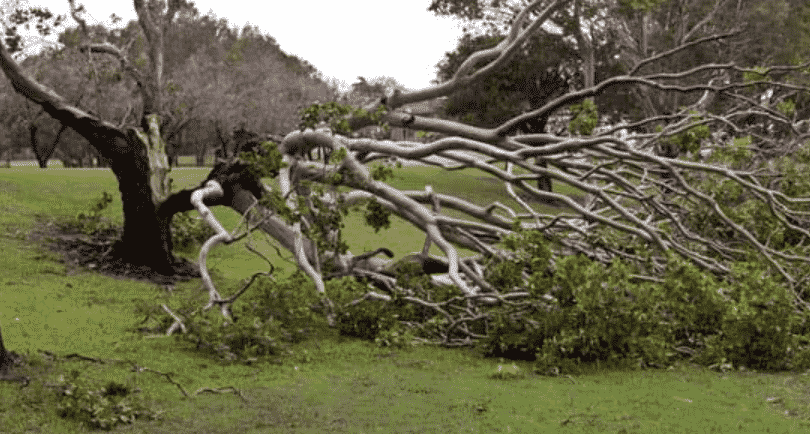
It’s similar to the odds of dying in a commercial plane crash (1 in 11 million) versus a private jet (1 in 10,000). The odds don’t look that bad if you only fly in commercial aircraft, but dying in a private plane is comparable to motorcycle deaths.
That’s the same way you should look at the dangers of camping under a tree. The odds of getting crushed by a tree in mild weather are slim to none. The odds are so small that I’d be willing to bet my life on it and I’ve camped under trees countless times.
The odds of injury/death shoot up drastically when the weather turns and I’m not just talking about lightning. It’s not that unusual for strong winds, rain, and snow to dislodge dead and loose branches. Think about all the branches that fall in your yard throughout the year.
I have 20-30 trees in my front yard and they drop 100s of branches throughout the year. When the weathers nice you might have 2-3 branches per month to pick up. When it rains, snows, or wind picks up you can end up with 20 branches in a single night.
Trees Are Natural Lightning Rods
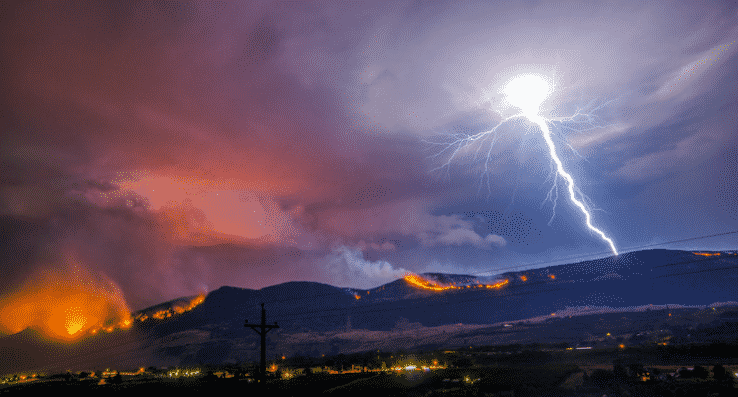
Camping in a tent is never a good idea when there’s thunder or lightning. Most people know that lightning is more likely to strike trees. So camping directly under a tree during a lightning storm isn’t a good, but camping in an open field is just as bad.
Lightning usually goes through the tallest object within the strike zone. That’s usually a tree in remote areas, but if you’re camping in an open field that makes your tent the tallest object. Lightning will run through the tent poles into the ground so there’s a chance of getting struck by a side flash.
You can minimize the risk by using a sleeping pad to get your body up off the ground and staying away from the sides of the tent. No part of your body or sleep system should be touching the sides of the tent or any tent poles. The current may still run through the sleeping pad, but at least you won’t get a full strike.
Where’s The Safest Place To Camp In A Thunderstorm?
If you can’t camp in an open field, and you can’t camp under a tree, where’s the best place to pitch a tent in a thunderstorm? If possible, it’s always a good idea to seek shelter in an enclosed grounded building, but that’s rarely an option when you’re camping.
So where should you pitch a tent if there’s thunder and lightning in the weather forecast? If there’s enough time to move your campsite, the safest option is to go deep into the forest looking for a short/young healthy tree that’s unlikely to drop dead limbs or you can find low ground (valleys, dips, bottoms of hills, etc), but you run the risk of flooding.
Lightning usually strikes single trees or right at the edge of the forest. As you go deep inside a densely grown forest the risk of being hit by lightning isn’t any higher than in other places. Exposed places like hills, mountain crests, and river banks are just like open fields so they should also be avoided.
Don’t Pitch A Tent Under Trees That Have Dead Branches Or Loose Limbs
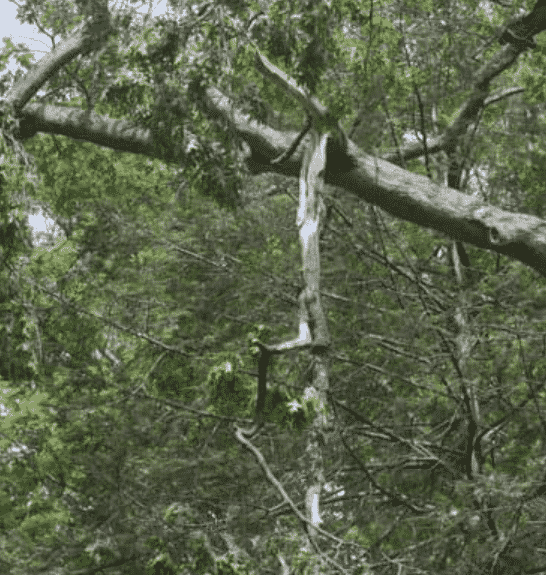
Here’s a general life lesson that should be obvious, but it’s worth noting. Try to avoid spending time under trees that have dead branches or loose limbs. You never know when a dead branch or loose limb will come falling down from above.
I don’t even like to stand under trees with dead branches. Pitching your tent under under a tree with dead branches is asking for trouble. Do you really want to bet your safety on whether or not a dead branch will fall down?
Over 100 people are killed by falling branches in the United States each year. It’s not worth taking that risk when you can easily move 10ft in any direction to be out of the impact zone. In the best case scenario a falling branch could tear through your tent, but it could just as easily rip through your body.
A branch doesn’t even have to be large to cause a lot of damage. I had a 2 inch branch tear through the roof of my shed. If it can go through a metal roof it could easily puncture the rough of your tent and rip right through your body.
Don’t Pitch Tents Under Pine Trees, Fruit Trees, and Trees That Shed Acorns In the Fall

Pitching a tent under a tree is a great way to get shad, but there a small handful of trees that you should avoid. It should seem fairly obvious when you think about it for a second. You need to avoid pitching your tent on any tree that has falling fruits, pinecones, acorns, etc.
This isn’t about potentially damaging your tent! Falling coconuts might cause a problem, but acorns, pine cones, apples, etc. will usually bounce and roll off your tent. Your main concern is getting bonked in the head by falling objects.
Even a tiny acorn can hurt like heck if it drops on your head from 50ft up. I got bonked in the head by a falling acorn a few years ago. It wasn’t enough to give me a concussion, but it made my knees wobble and felt like I got punched in the head. The headache and golf ball sized welt were enough to make me rethink pitching my tent under a tree in the fall.
Pine Tree Needles and Sap Can Damage Your Tent
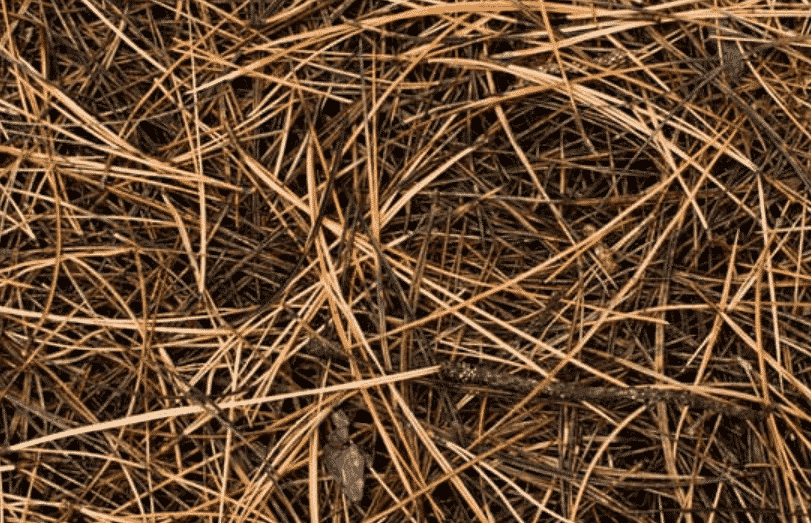
Falling pine cones are a slight nuisance, but getting hit by one won’t hurt all that much. I wouldn’t call a pine cone fluffy, but it’s almost like getting hit in the head with a corn hole bag. It doesn’t feel great, but it won’t cause a concussion or anything. The main concern with pine trees are the bed of needles and sap that will be a pain to wash off your tent.
Have you ever tried walking barefoot on a bed of pine needles? I was constantly walking around barefoot as a child and you quickly learn to avoid walking on pine needles. They feel silky smooth under your feet one minute and they stab through your skin the next.
The same exact thing will happen to your tent floor if you set it up on a bed of pine needles. Pine needles will quickly tear through your tent floor making dozens of tiny punctures that will need to be patched. Hopefully you have a big sheet of Tenacious tape to repair the holes, because you will definitely need it.
There are times when you won’t be able to avoid setting up camp under a pine tree (campgrounds, coniferous forests, etc.). That’s where tent footprints aka ground cloths, and tarps come in handy! Your cheap tent footprint (less than $20) will take the abuse so you don’t damage the tent floor.
Pine sap technically won’t damage your tent, but it leaves behind a sticky residue that’s a pain to wash off. Spot cleaning your tent with mineral oil is the best way to clean off pine sap. You can also use WD-40, Goo Gone, and alcohol based hand sanitizer or wet wipes to clean off stubborn sap. Just try not to over scrub and wear away the waterproof coating.
Think About All The Bird Poop Raining Down From Above
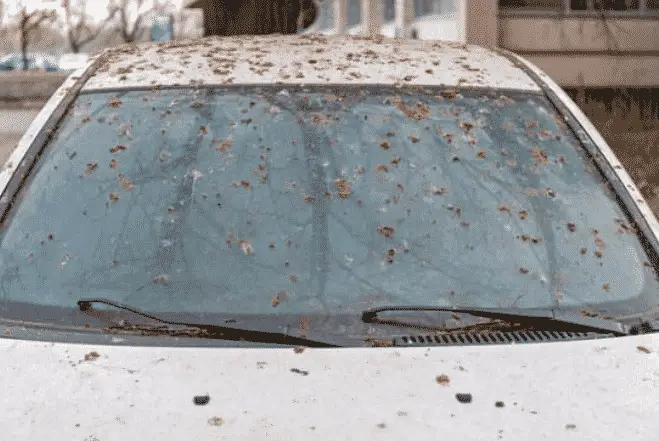
Have you ever parked your car under a tree and came back to piles of bird poop and undigested berries on the roof of your car. You can drive your car through a car wash, but washing a tent isn’t easy. Do you really want to pitch your tent directly in the line of oncoming fire?
Cleaning fresh bird poop (the white stuff) off your tent is fairly easy. Just hose it down and wipe it off with a brush and mild soap. Getting undigested berry stains off tent fabric is a bigger problem. You can try scrubbing down the tent walls, but you usually need a stronger product.
The Mr Clean Magic Eraser is the best product for removing stubborn tent stains. Just wet the Magic Eraser sponge and start scrubbing. Covering a large area can be tedious, but it will get out almost any tent stain. Enzyme-based stain removers like Zout and Puracy also work. Just spray them on, let it soak for a few minutes, and wash it off.
